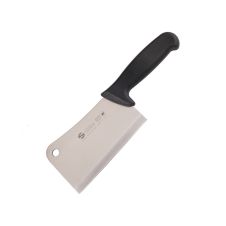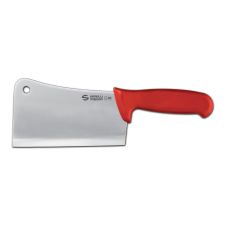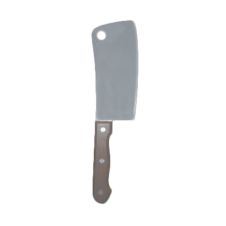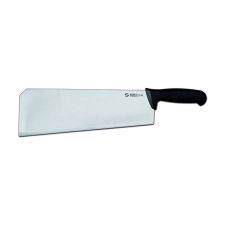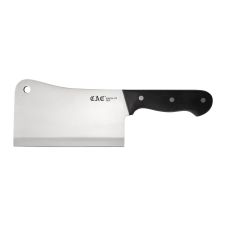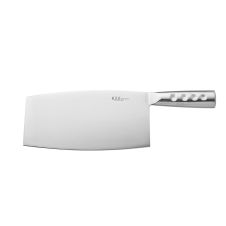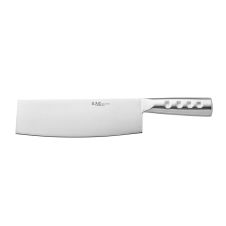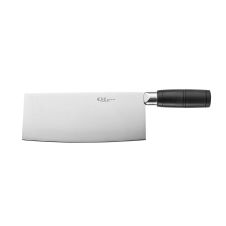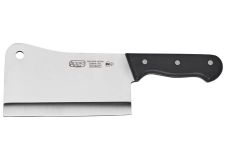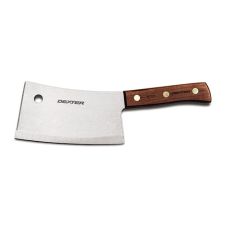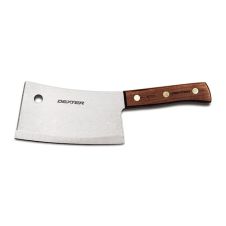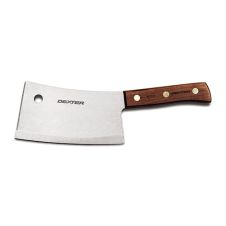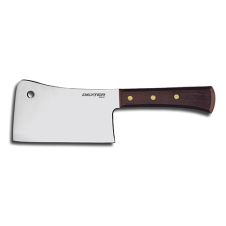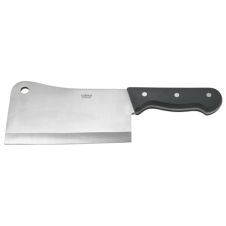Cleaver Knives
-
Ambrogio Sanelli SQ37016B, 6.25-Inch Blade Stainless Steel Kitchen Cleaver, BlackSKU: SQ37016B$28.99
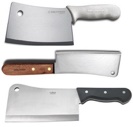
Cleaver Knives
Cleaver kitchen knives, often known as meat cleavers or butcher cleavers, are unquestionably the workhorses of the kitchen. These heavy, multipurpose tools have a long history, and their unique design makes them invaluable for various culinary jobs. We will dig into the world of butcher cleaver knives today, from their importance to selecting the proper kind.
Multipurpose Kitchen Workhorse
A meat cleaver knife is a genuine culinary workhorse. Its wide, rectangular blade and robust construction make it perfect for a variety of tasks:
- Use a cleaver's physical power to easily handle huge portions of meat, bones, and difficult vegetables.
- Despite its small size, a cleaver can accurately cut tiny slices of meat, making it a handy tool for butchers and cooks.
- The flat edge of a cleaver may be used to flatten meats, an essential stage in preparing meals like schnitzel.
Effective Cleaver Knife Techniques
Consider the following approaches for successful cleaver use:
- Grip: Use your dominant hand to hold the handle firmly, while your other hand directs the food. This grip offers both control and safety.
- Chopping Motion: Use a smooth, up-and-down motion to ensure the blade meets the cutting board completely. Allow the cleaver's weight to accomplish the majority of the job.
- Slicing Technique: When slicing, use a rocking motion similar to a chef's knife while controlling the cleaver.
Maintenance and Longevity of Your Cleaver
Proper care and maintenance are required to preserve the life of your cleaver:
- Cleaning: It is critical to handwash your cleaver with mild soap and warm water to preserve its cleanliness and lifespan. Rinse the blade under running water after each use to eliminate food residue. Scrub the edge gently with a soft sponge or brush, taking care not to use abrasive products that might harm the surface of the knife.
- Drying: Properly drying your chefs' cleaver is critical to preventing rust, especially if the blade is carbon steel. After cleaning, carefully dry the whole knife, giving specific attention to the blade, using a clean kitchen towel. Store the cleaver in a dry area or on a magnetic strip to promote air circulation and avoid moisture accumulation.
- Sharpening: Regular sharpening is required to keep your cleaver knife sharp. Cleavers are recognized for their toughness, but even the most tapered blades may be dull with time. Sharpen your cleaver using a whetstone or cleaver-specific knife sharpener.
Conclusion
Cleaver knives are powerful culinary instruments that combine force and accuracy. You can get the most out of your cleaver knife by knowing its adaptability, selecting the proper kind, perfecting skills, and preserving its life. So, make your cleaver your kitchen workhorse and discover how it may improve your culinary experiences.



